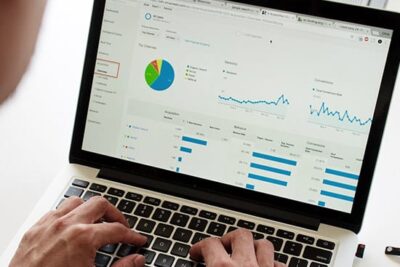4 reasons your team won’t use data—even if they want to
Has this ever happened to you? Your office spent weeks collecting data, building reports, and setting up a new dashboard for your colleagues. Several months down the road you look at the adoption rates, only to discover they are less than you had hoped. Or perhaps this sounds more familiar: You’re in yet another meeting where one voice exclaims, “We need data!” only to have all other voices fall silent when someone asks for volunteers to actually investigate the data. The causes may vary but the end result is the same: despite significant efforts, some of your colleagues just won’t use data. This blog series will explore several of the most common problems with data end-user adoption and offer potential solutions.
Last month, we discussed why people might not want to use data—and how to win them over. In this post, we’ll answer the question: why don’t people use data even when they want to?
The leadership perspective
As a user experience researcher with Edify, I’ve had the opportunity to survey many of our partners and speak directly with higher ed leaders about how their teams use data. After dozens of conversations, I’ve heard plenty of reasons why potential data consumers did not become actual data consumers. I’ve even heard more than one partner say, “people say they want data, but when we give it to them, they don’t use it.” So, what exactly is stopping teams from using data?
Here are four of the most common reasons that data isn’t applied, and suggestions on how to encourage adoption.
4 reasons your team doesn’t use data even when they want to
1. They aren’t aware the resource exists (or they forgot)
The simplest reason why your colleagues aren’t engaging with data is because they don’t know about it. Your team may have put countless hours into developing a new dashboard, but if you quietly added it to your analytic portal and didn’t tell anyone, how can you expect anyone to engage with it? Additionally, users who logged in once could easily forget about a dashboard if they don’t have a reason to visit it frequently.
Solution: Get the word out
When you release a new report or dashboard, you should notify any intended users. This could be as simple as an email or a trip down the hall to their office, or you can create a 1-page overview or FAQ document to advertise the new tool. As you establish additional resources, consider creating an analytics catalog so that curious would-be consumers are empowered to explore and take advantage of the resources available to them. This has the added benefit of serving as a reference for available analytics that users might only need to visit once or twice a year.
- If you hear: It would be great if we had data on term-to-term retention.
- You might say: Actually, we already have a dashboard for that—I’ll share information about it at the next department heads meeting, and we’ll distribute a guide for anyone who may want to use it.
Case in point
In 2021, EAB hosted a focus group for an institution that hoped to understand why the equity dashboard they created wasn’t being utilized. We uncovered that prior to the focus group, most of the participants were unaware that the dashboard existed. The institution partnered with EAB to develop a training handout and a digital flier they could distribute to notify their colleagues about the dashboard.
2. They don’t trust the data
Data distrust is a common challenge among data consumers. Data recipients often receive the end result (a dashboard or report) without context illustrating how that end result was developed. This leads to skepticism of the end results. This is especially common in higher education, where many consumers’ jobs involve questioning assumptions. We often hear from institutions about uncertainty regarding the source, the methodology, the timeliness, and data definitions.
Solution: Offer a peek behind the curtain
Transparency is the easiest solution to data distrust. Resources like a data dictionary, FAQ wiki, training video, and visual representations of data lineage offer data consumers the ability to answer their own questions and better understand the data that they’re looking at.
- If you hear: What does your report mean when it says “student”?
- You might say: In the data dictionary, we defined ‘student’ as, “anyone enrolled in coursework, after census, in the Fall of this year.”
Case in point
Share the data, good and bad, in an open forum like a faculty meeting or training. The University of Alaska Anchorage did this by hosting a “DFW Intensive” to show department level DFW rates compared to the same departments at peer institutions. This format allows users to collectively answer their questions about methodology and strategy and ensures that all parties know they’re working with the same data.
Get the Infographic: How to Respond to Data Detractors
3. They don’t have access
In a Fall 2022 survey sent to new Edify partners, only 15% of respondents indicated that they had direct access to the data they need to do their job. Compared with the nearly 60% who said they would like to be able to investigate data without assistance from someone else, there is a clear disconnect.
There are many valid reasons why consumers might not have access to the data and analytics they’d like. Sometimes the data isn’t relevant to the scope of their work. In other cases, it includes unauthorized personally identifiable information (PII), or there is an institutional policy restricting access to this data. But typically, the reason is simply that no one thought to give them access. Permissions to access datasets and reports are often established and then forgotten about until someone speaks up.
Solution: Unlock the safe (but still hide the valuables)
Outside of the legitimate reasons why we might not give open access to all data for all of our team members, providing access where possible can improve trust and awareness and enable users to find their own insights. A good starting point is creating a role-based permission framework. Other steps include a resource library with a documented data request workflow, and/or removing sensitive information or PII from reports or dashboards unless it is required. Routinely auditing access to existing reports and datasets ensures that all of the right consumers (and only the right consumers) can get the information that they need.
- If you hear: I need access to the Enrollment CRM.
- You might say: Based on your role, we can’t give you full access to the CRM. What specific data are you looking for? Let’s create a custom dashboard.
4. They don’t have the resources
One of the biggest challenges in getting our peers to use data is their limited resources. They lack a technology to help them make the most of their data, or they lack the time to learn how to use the latest technology they’ve acquired. Or they’ve clicked around in a new technology and realized that their office lacks the requisite skill to capitalize on all that it has to offer.
Solution: Invest intelligently
Though challenging given ever-shrinking budgets, ensuring you have the right people in the right roles trained the right way is one of the most impactful investments you can make. The more broadly applicable solution to this challenge is consistently utilizing a single analytic tool that is accessible to non-technical users. This makes it possible for users trained on one report or dashboard to easily explore another. Tools with “drag and drop” or other no-code functionality reduce the barrier to entry for data exploration even further, allowing consumers of nearly all technical abilities to leverage the tool.
- If you hear: I don’t have the tools I need to access and understand data.
- You might say: Let’s explore options that facilitate self-service analytics.
Case in point
When faced with the task of reducing equity gaps in their retention rates, CSU Fullerton invested in 10 retention specialists to leverage new technologies. This enabled the new hires to focus on the new technology without needing to immediately train existing staff on yet another new technology. This investment paid off with nearly 3,500 students re-enrolled over a 4-year period.
In conclusion
In addition to the strategies above, consider partnering with EAB to encourage your team to leverage the data and analytics available to them. Edify’s data warehouse unites your data into a single, trusted source of truth, and built-in analytics tools make that data easy to access, understand, and apply. EAB’s data experts can assist your staff in developing materials and presentations to ensure stakeholders are informed of the data at their disposal and how to use it.

More Blogs

How to build a predictive model in higher education

Digital innovation requires digital leadership
